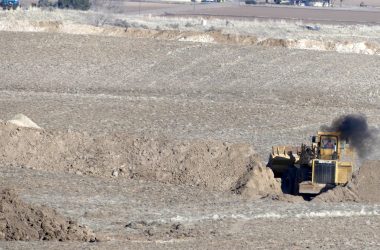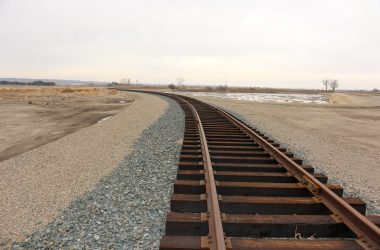
Legislation approved by the Oregon Legislature will allow, under very specific circumstances, construction of houses on low-grade farmland in Malheur County. (The Enterprise file)
VALE – More housing will be available on marginal farmland and local government agencies will have to favor Malheur County residents when filling jobs after action by the Legislature last week.
Senate Bill 16 could provide up to 100 new homes on land now restricted to farming while House Bill 2026 is designed to require government employers to give “preference to residents who live inside the Eastern Oregon Border Economic Development Region for civil service positions if the majority of the work of position will be performed within the region.”
Senate Bill 16 outlines rezoning some inferior farmland into two-acre lots with no more than 200 acres total set aside for homes. A similar proposal was scuttled during the 2019 Legislature. Under the plan, property would be rezoned from farming under 15 benchmarks that must be met. The Malheur County Court will appoint a new four-member review board of local residents to evaluate such decisions.
The legislation also requires a public hearing on each petition to rezone the property.
The two bills are key pillars in the legislative strategy of the Eastern Oregon Border Economic Development Board, the seven-member committee of local people created by the Legislature to spark economic development in Malheur County along the border with Idaho.
The bills aim to address a worsening housing shortage locally and slow the export of government salaries into Idaho.
“I think it is great for our region. It will give us an opportunity to grow,” said Tiffany Cruickshank, chair of the Eastern Oregon Border Economic Development Board.
The new program would also be “landowner-centric,” said Shawna Peterson, executive director of the border board. “It won’t be an out-of-state or out-of-area developer swooping in,” she said.
The legislation represents a victory for the border board, a win reached despite vigorous opposition from outside the area.
Mary Kyle McCurdy, deputy director of the conservation group 1000 Friends of Oregon, said in written testimony that the program was “fundamentally contrary to Oregon’s land use program and sound land planning.”
McCurdy asserted that there is enough land for homes inside Ontario’s urban growth boundary.
“Development of 100 houses scattered on farmland outside of Ontario and other cities in the region will draw funding to provide infrastructure and services to those houses and away from where cities like Ontario have already planned for houses and are seeking to attract development,” she wrote.
The League of Women Voters of Oregon also opposed the program because of its rural impact.
“I respect they are worried about urban sprawl but that is absolutely not what this bill does,” said Cruickshank.
Peterson said a lot of work was done as the legislation advanced to “dispel myths” such as “this would result in luxury second homes eating up farm ground. And that’s just a blatant misrepresentation.”
“There simply isn’t a market for luxury, second homes. They think Bend is eastern Oregon,” said Peterson.
Peterson said the land that would be converted to homesteads would not be productive for farming or ranching.
“We hear repeatedly from businesses and employers and residents that there is real shortage of housing opportunities, especially in the mid to upper end stock of homes,” said Peterson.
State Sen. Lynn Findley, R-Vale, who sponsored the legislation, also said engaging opponents was “frustrating.”
“They would not have a conversation. I tried to show them maps, and they would not look. I kept trying to talk to those folks. They refused to listen,” said Findley.
Most opposition came from outside of the county.
Findley called passage of the land use bill a “pretty strong win on all accounts.”
House Bill 2026 will also be an important step forward for the local area, said Peterson.
“We have a disproportionally imported work force. It doesn’t supplant qualification,” she said. “Just like a veteran’s preference, it gives a five-percentage boost to someone who lives in the county.”
Cruickshank said the hiring preference would help keep employees living on the Oregon side of the Snake River.
“When the prison was brought here initially, it was going to bring economic vitality and jobs. Well, everyone lives in Idaho and works in Oregon. Over 70% of employees at the prison live in Idaho. I think it will be interesting to see how it works out in our area,” she said.
News tip? Contact reporter Pat Caldwell at [email protected]
Previous coverage:
Malheur County land use bill pushed by border board draws controversy
Push by Malheur County to open low-grade ag land for development back on the legislative docket
SAFEGUARD YOUR LOCAL NEWS
Take one action today to help the Enterprise grow and do more for the community through accurate, fair reporting.
SUBSCRIBE: A monthly digital subscription is $5 a month.
GIFT: Give someone you know a subscription.
ONE-TIME PAYMENT: Contribute, knowing your support goes towards more local journalism you can trust.




